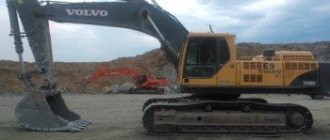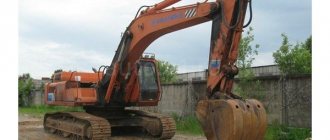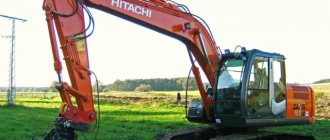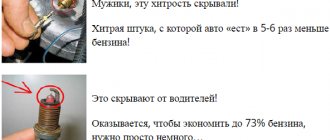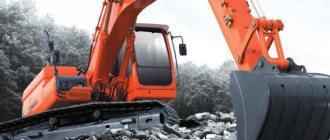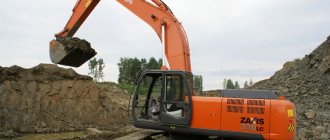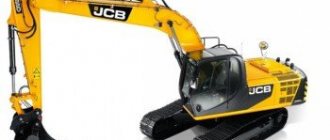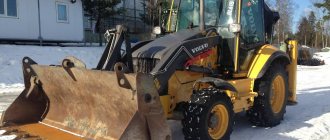Range of executive cars
| This article need additional quotes for verification . |
| Volvo 700 series | |
| Volvo 740 GL 2.0 1989 | |
| Review | |
| Manufacturer | Volvo cars |
| Production | 1982–1992 (1,430,000 units) |
| Assembly |
|
| Body and chassis | |
| Class | Mid-Size Luxury/Executive Car () |
| Layout | Layout FR |
| Chronology | |
| Predecessor | Volvo 200 series (which continued) |
| Successor | Volvo 900 series |
In Volvo 700 series
This is a range of executive cars produced by the Swedish manufacturer Volvo cars from 1982 to 1992. The 700 series was introduced in 1982 by the luxurious 760, followed two years later by the lower priced 740, which capitalized on the prestige achieved by the very similar 760. The 700 series was then gradually replaced starting in 1990. through the 900 series. The 700, designed by Jan Wilsgaard, was originally intended to replace the 200 series, but production of this model continued until the early nineties. The expensive 780 was a Bertone-designed coupe version that went into production in 1986 and left without a direct successor until four years later.
The most noticeable differences between the 700 and 900 series were the latter's more rounded body corners and a slightly better designed interior. The 700th series ended at the end of 1992.[2] when the last 740 were built (although they were considered 1993 models). The range was expanded and finally superseded by the Volvo 900 in 1993, with the last of the 900s sold in 1998.
Volvo 740
| Volvo 740 | |
| Review | |
| Production | 1984–1994 |
| Body and chassis | |
| Body type |
|
| Transmission | |
| Engine |
|
| Transmission of infection |
|
| dimensions | |
| Wheelbase | 2770 mm (109.1 in) |
| Length |
|
| Width |
|
| Height |
|
| Curb weight | interior: 1,315–1,404 kg (2,899–3,095 lb)[3][4] real estate: 1,371–1,458 kg (3,023–3,214 lb)[5][6] |
Introduced in early 1984 (1985 model year in the US and Australia), the 740 arrived almost two years after the luxurious 760.[7] It was a junior version of the original 760, intended as a mid-size car that offered more style, performance and luxury than the 200 series. The number 4 in the middle of a Volvo model name once meant a four-cylinder engine, but by the time the 740 was introduced it simply meant less luxurious equipment , since four- and six-cylinder engines were installed on both models. . The 740 was available as a four-door. a sedan (sometimes called the 744) and a five-door station wagon (also known as the 745). The station wagon premiered simultaneously in 1985. Toronto and Chicago Auto Show in early February 1985. The station wagon was aimed directly at North American markets and went on sale in Europe only a few months later, in the fall of 1985.[8]
Pre-restyling Volvo 740 GLE station wagon (USA)
The Volvo 740 has been a popular choice as a police car in several parts of Europe, especially with police in Scandinavian countries.
Restoration of the Volvo 740 Turbo sedan (USA) Pre-restyling of the Volvo 740 Turbo Estate (Germany) Restoration of the Volvo 740 sedan (Germany) Volvo 740 GL station wagon (Netherlands)
For 1985, an intercooled version of the 2-litre turbo engine (B200ET) was introduced for markets such as Italy, where larger engines were heavily taxed. This unit develops a power of 160 hp. (118 kW) at 5,500 rpm, ten horsepower more than the previous non-intercooled B19ET variant, enough for a claimed top speed of 200 km/h (124 mph).[9] The 1986 model year marked the worldwide introduction of the station wagon; other differences were limited to a new font for the "740" badge and new hubcap designs. First shown at the 1988 Geneva Motor Show with preliminary specifications, but only going on sale with the 1989 model year cars, a 16-valve version of the larger B230 engine (B234) was introduced.[10] This model has almost the same peak power as the turbocharged version and was Volvo's first multi-valve engine.
Facelift
In 1990, the 740 received a minor facelift with new, smaller composite headlights and taillights in the style of the 780. In 1991, both the 740 and the newly introduced 940 received an updated instrument panel, similar in appearance to that of the 760. The 740 remained largely unchanged in during the 1992 model year, and sales ended in 1994. Production of the 740 ceased. 2 October 1992, although the engine, transmission, chassis and other parts remained in the Volvo 940 (introduced September 1990), which was virtually identical to the 740 except for the rear of the sedans.
Design aside, 1990 saw a number of mechanical improvements for the 740 series. The B200 and B230 engines received 13 mm (0.5 in) larger connecting rods. The 740 Turbo switched from the Garrett T3 Series Turbocharger to the Mitsubishi TD04 Series, which provides faster spooling and better boost at low engine speeds, although at the expense of peak performance. The electronic fuel injection system was upgraded from Bosch LH-Jetronic 2.2 to 2.4 (1988 for naturally aspirated cars, 1990 for turbocharged cars). The new fuel system offers on-board diagnostics that are accessible from the engine compartment and do not require special equipment. In 1994, the final model year for the 740, the mechanical engine cooling fan was replaced by an electric fan.
Versions
Trim levels were 740, 740 GL, 740 GLE, 740 SE, 740 GLT and 740 Turbo worldwide.
Continental markets had some exceptions to this rule. The 740 Turbo 16V (most markets received a 2.3-litre eight-valve turbocharged engine) was sold mainly in Italy, but also Portugal and Belgium, and used the 2-litre B204FT engine which was also used in the 780 for the same markets. The 740 Turbo 16V featured the 780's ECC as standard.
In late 1991, Volvo offered a sedan and station wagon badged 740 SE, which stands for "special equipment". The 740 SE came in three colors; red, black and white. Mechanically, the 740 SE was the same as the regular 740 Turbo, but with many features such as a power sunroof and leather seats as standard equipment. The SE also featured a custom color-keyed factory body kit including front and rear bumpers, side skirts and a sedan-specific spoiler. The 740 SE and 740 Turbo sedan were discontinued in 1992.
Video
The Volvo 700, although a 70-tonne truck, operates like an 80-tonne excavator. Unique technical characteristics are achieved due to significant energy availability, optimally balanced hydraulics and efficient design, which allow the machine to function effectively in difficult conditions.
Among the key features of the excavator are:
- Highly efficient engine of our own production.
- A productive hydraulic system, due to which precision lifting (excavation) and smooth operation are achieved along with high speed and breakout force.
- Increased power and digging force.
- A comfortable Volvo Care Cab operator's cabin with a large glass area, equipped with a specialized protective structure. It ensures safety and freedom of movement for the operator.
- Reinforced design of the boom with handle and superstructure, guaranteeing a long service life of the entire machine.
- A reliable undercarriage with a robust design.
The Volvo 700 model is characterized by extended service intervals and replacement of equipment. Due to this, the period of uninterrupted operation of the equipment increases. Thanks to the grouping of elements, maintenance time is significantly reduced. At the same time, most of the elements of the excavator can be replaced from the ground.
New and used Volvo 700 modifications will help their owners perform the maximum amount of work in a variety of conditions and will quickly pay for themselves in the shortest possible time.
Volvo 760
| Volvo 760 | |
| Volvo 760 GLE (facelift model) | |
| Review | |
| Production | 1982–1990 |
| Assembly | Sweden: Kalmar (VKA) Australia: Clayton[11] Belgium: Ghent Canada: Halifax (VHA) |
| Body and chassis | |
| Body type | 4-door sedan 5-door station wagon |
| Transmission | |
| Engine |
|
| Transmission of infection | 5-speed Volvo M47 manual 4-speed Volvo M46 manual 4-speed AW71 automatic 4-speed AW72L automatic (lock-up torque converter) 4-speed ZF4HP22 automatic (lock-up torque converter) |
| dimensions | |
| Wheelbase | 2770 mm (109.1 in) |
| Length | 1982–1987: 4800 mm (189.0 in) 1988-1990: 4790 mm (188.6 in) |
| Width | 1982–1987: 1,750 mm (68.9 in) 1988-1990: 1,760 mm (69.3 in) |
| Height | 1410 mm (55.5 in) 1435 mm (56.5 in) (station wagon) |
| Curb weight | 1,360–1,510 kg (3,000–3,330 lb)[12] |
The 760 marked a new strategy for Volvo, as it introduced the six-cylinder executive model first and the four-cylinder 740 only a few years later. Jan Wilsgaard, Volvo's head of design and styling, proposed more than 50 new designs for the new car.
It was introduced in the US in 1982 for the 1983 model year as the 760 GLE sedan, launched in Sweden in February 1982 and in the UK from July 1982.[7] In February 1985, the 760 station wagon (domestic parlance "765") was introduced and went on sale in the United States and Canada a few months later.[8] European markets received the cars only in the fall of the 1986 model year.
This new design was criticized in the media upon release: Gordon Murray of Autocar Magazine
said: “To me this is obscene.
This goes against what everyone else is trying to do. To me it looks like a European version of a North American car. It makes the same amount of power as a 2600 or 3500... I hate seeing something like that these days. This is a clear step back." However, everything changed when Autocar
and
Driver
got their hands on the 760 turbo intercooler;
they said it was one of the best handling and fastest accelerating cars they had ever seen, going from 0-60 mph (97 km/h) in under 8 seconds.[ citation needed
]
Pre-facelift Volvo 760 GLE Sedan (Australia)
Although the turbodiesel was introduced with the V6 model, it was not immediately available in all markets and Volvo focused its attention on markets where diesel engines had a strong presence. In Sweden, for example, it did not go on sale until the 1983 model year.[13] In contrast, in Italy the 740 and 760 diesels sold more than the Mercedes-Benz W123 diesels and BMW 524d combined in the first half of 1984.[14] In 1983, Sweden also introduced air conditioning and power windows as standard, and a larger 82 liter (22 US gal; 18 imp gal) fuel tank was gradually introduced.[13]Turbocharged and intercooled options were added to 1984, while the 740 (the 760's little brother) was introduced for the 1985 model year. In 1985, electronic traction control was introduced. Unlike the smaller 740, the 760 received standard anti-lock brakes on many models.
The 760 received many updates for the 1988 model year. On the outside, the most noticeable of the more than 2,000 changes were redesigned front sheetmetal, including an aluminum hood, recessed windshield wipers and new aerodynamic headlights. Inside, all 760s get a redesigned instrument panel angled toward the driver, three-way steering, and a new stereo system. Top versions (standard in the US) were equipped with new electronic climate control (ECC). The lower cabins received the same multi-link independent rear suspension that was also introduced on the 780.[15] The new four-link rear axle also required a new fuel tank, which was shaped like a saddle and mounted on the driveshaft. Tank capacity was reduced by 2 liters to 80 L (21.1 US gal; 17.6 imp gal).[16] Along with a redesigned dashboard, the interior has been updated with a redesigned bubble and plenty of fabric accents. The 760 Estate received the same changes, except it continued to use a live rear axle.[16] This was due to the increase in weight: the new rear suspension weighed approximately 40 kg (88 lb) more than the old one, and Volvo decided that the loss of payload was not worth the improvement in comfort.[17]
East German leader Erich Honecker often used this Volvo in his government fleet.
In 1990, the final year of production, Volvo 760 sedans received Volvo 780-style taillights and minor interior changes. The 760 was discontinued after the 1990 model year (production ended June 27, 1990) and was replaced by the Volvo 960, an update to the 760 chassis. The Volvo 740 outlived the 760, remaining for another two years, and was finally discontinued in 1992 after the model's launch 850.
The Volvo 760 was built in Kalmar, Sweden, Halifax, Nova Scotia, Canada and Ghent, Belgium.
- Pre-facelift of the Volvo 760 Turbo sedan (Australia)
- Volvo 760 GLE after restyling (Australia)
- Volvo 760 Turbo Intercooler station wagon (USA)
Volvo 780
| Volvo 780 | |
| Review | |
| Production | 1986–1990 |
| Assembly | Italy: Turin |
| Designer | Bertone |
| Body and chassis | |
| Body type | 2-door coupe |
| Layout | Layout FR |
| Transmission | |
| Engine | 2.0L B200ET turbo I4 2.0L B204FT/GT turbo DOHC I4 2.3L B230FT/FT+ turbo I4 2.8L B280F 2.4L D24TIC I6 turbodiesel |
| Transmission of infection |
|
| dimensions | |
| Wheelbase | 2770 mm (109.1 in) |
| Length |
|
| Width | 1760 mm (69.3 in) |
| Height | 1400 mm (55.1 in) |
| Curb weight | 1,549–1,583 kg (3,415–3,490 lb)[19][20] |
| Chronology | |
| Predecessor | Volvo 262C |
| Successor | Volvo C70 |
The Volvo 780 coupe debuted at the 1985 Geneva International Motor Show, Switzerland, marking Volvo's return to the two-door coupe market following the departure of the 262C in 1981. The 780 became available in Europe in 1986 and in the US a year later.
Like its predecessor, the 780 was designed and built by Carrozzeria Bertone in Turin, Italy. The lines of the hood, trunk and roof were slightly lower than the standard 700 series profile, and the C-pillar was wider and sloped more gently towards the trunk. Headroom was improved over the 262C due to the Bertone roofline being lowered by 1cm. All window frames had matte black trim and chrome trim. Chrome also highlighted the door handles, bumpers and side moldings. Initially it was planned to use a smaller one, with a volume of 2458 cc. See turbocharged engine version. PRV V6 (as seen on the Renault 25 and Alpine),[21] which were successfully tested in the 740s and 760s. However, in the 780's smaller engine bay, the engine overheated and the PRV V6 Turbo never appeared in a Volvo.
Rear view of a 1989 Volvo 780 V6
In the first 2 years that the 780 was available worldwide (1986 and 1987), it received the B280F V6 engine and a solid (live) rear axle. Initially, only Volkswagens were produced on the Italian market. The D24TIC was to be offered with 129 hp. (95 kW),[21] but a V6 engine soon became available, as well as a 2.0-liter turbocharged engine (B200ET) producing 155 hp. (114 kW), which was added in Italy later in 1986. In August 1987, the 780 was fitted with Volvo independent rear suspension, which used autonomously leveling Nivomat shock absorbers to maintain the correct ride height. An improved climate control (ECC) unit was also installed.[16]
The B280F at that time had approximately 150 hp. (110 kW), but the car itself weighed almost 3,400 lb (1,500 kg). To address the performance issue, Volvo introduced the B230FT+; B230FT with Volvo Turbo+ boost controller, increasing engine power to 175 hp. (129 kW). The next model year it increased to 188 hp. (138 kW). In Italy, later 780s were available with the B204GT. It was a 16-valve turbo engine with 200 hp. (147 kW). Only 165 examples of the 780 were built with this engine. In the car's final year of production, 1991, it was renamed simply "Coupe". At the moment, the car was produced only in a turbocharged version.
The official total production of the Volvo 780 from 1986 to 1991 is 8,518 vehicles. From 1986 to 1995, Volvo offered a small sports coupe. front-wheel drive Volvo 480, but a 780 successor would not be introduced until 1997, when the C70 became available.
Characteristics
Models
The sedan originally debuted in Europe in 1982 and was joined by a station wagon in 1985.
Model availability:
| Model/year | 740 | 740GL | 740 GLE | 740 GLE 16 valve | 740 GLE Turbodiesel | 740 Turbo | 740 SE | 760 GLE | 760 GLE Turbodiesel | 760 Turbo | 780 GLE | 780 Turbo |
| 1982 | EU/Australia/USA | EU/US | ||||||||||
| 1983 | EU/Australia/USA | EU/US | ||||||||||
| 1984 | EU | EU/Australia/USA | EU/US | EU/Australia/USA | ||||||||
| 1985 | EU | EU/Australia/USA | EU/Australia/USA | EU/US | EU/Australia/USA | |||||||
| 1986 | EU/Australia | EU/Australia/USA | EU/US | EU/Australia/USA | EU/Australia/USA | EU/US | EU | EU (Italy) | ||||
| 1987 | EU/Australia | EU/Australia/USA | EU | EU/Australia/USA | EU/Australia/USA | EU/US | EU/US | EU | ||||
| 1988 | EU/Australia | EU/Australia/USA | EU | EU/Australia/USA | EU/Australia/USA | EU/US | EU/US | EU/US | ||||
| 1989 | EU/Australia/USA | EU/Australia/USA | EU/Australia/USA | EU/Australia/USA | EU/US | EU/US | EU/US | |||||
| 1990 | EU/Australia/USA | EU/Australia/USA | EU/Australia/USA | EU/Australia/USA | EU/Australia/USA | EU/US | EU/US | EU/US | ||||
| 1991 | EU/Australia/USA | EU/Australia | US | US | EU/US | EU/US | ||||||
| 1992 | EU/Australia/USA | EU | USA (real estate) | EU (real estate) |
Engines
These engines were offered on the 700 series cars:
- B19E: 2.0 L inline-4 (83.04-84.07, sedan only)[22]
- B19ET: 2.0 L turbo inline-4 (83.12-84.07, sedan only)[22]
- B23E: 2.3 L inline-4, naturally aspirated, Bosch K-Jetronic fuel injection ('84)
- B23ET: 2.3 L turbocharged inline-4, using Bosch Motronic engine management ('84)
- B23FT: 2.3 L turbocharged inline-4
- B28A: 2.8 L V6, naturally aspirated, carbureted ('82-85)
- B28E: 2.8L V6, naturally aspirated, Bosch K-Jetronic, high performance (82-86)
- B28F: 2.8 L V6, naturally aspirated, odd fire crankshaft ('82-86)
- B200E: 2.0 L inline-4, naturally aspirated, Bosch K-Jetronic 115 hp (85 kW)
- B200F: 2.0 L inline-4, naturally aspirated, Bosch LH-Jetronic 111 hp (82 kW)
- B200K: 2.0 L inline-4, naturally aspirated, Renix ignition, 200K had a standard head unlike the 230K (introduced for the '85 model)
- B200ET: 2.0L turbocharged inline 4-cylinder engine, Bosch Motronic engine management (155 hp or 160 hp introduced for '85 model)[22]
- B200FT: 2.0 L inline-4, turbocharged, Bosch LH-Jetronic 156 hp (115 kW)
- B204E: 2.0 L 16-valve DOHC inline-4 naturally aspirated (introduced MY '89)
- B204FT: 2.0 L 16-valve DOHC inline-4 turbocharged (introduced in model year 89)
- B204GT: 2.0 L 16-valve DOHC inline-4 turbocharged (introduced in model year 89)
- B230A: 2.3 L inline 4 naturally aspirated carburetor (1985–86)
- B230E: 2.3 L inline-4, naturally aspirated, Bosch K-Jetronic fuel injection system (introduced in '85 models)
- B230F: 2.3L inline 4-cylinder engine, naturally aspirated, fuel-injected, catalytic converter, 114 hp. ('85-88 740GLE, '89-90 740GL, '90-92 740)
- B230K: 2.3 L inline-4, naturally aspirated, carburetor, Renix ignition, Heron
head (introduced for '85 model year) - B230ET: 2.3L inline 4-cylinder, turbocharged, Bosch Motronic (introduced MY85)
- B230FT: 2.3-liter turbocharged inline-4, 160 hp. ('85-92 740 Turbo** note: '90-92 models produced 162 hp**)
- B234F: 2.3L 16-valve DOHC inline-4 naturally aspirated 153 hp ('89-90 740 GLE / GLT)
- B280E: 2.8 L V6, naturally aspirated, Bosch LH-Jetronic 2.2, 154 hp (113 kW) for Northern Europe or 168 hp. (124 kW) for Europe even a fire crankshaft (introduced in model year 87)
- B280F: 2.8 L V6, naturally aspirated, Bosch LH-Jetronic 147 hp (108 kW), even fire crankshaft (87-90)
- D24: 2.4 L inline-6 diesel, 82 hp (60 kW), naturally aspirated (Volkswagen)
- D24T: Inline-6 2.4 L, turbodiesel, 109 hp. (80 kW), variant of the LT35 engine produced by Volkswagen.
- D24TIC: 2.4L inline 6-cylinder intercooled turbodiesel engine, 122 hp. (90 kW) (780: 129 hp (95 kW)), variant of the LT35 engine produced by Volkswagen.
Transmissions
Volvo offered a variety of transmissions depending on year, model and engine combination, including:
- Manual transmission M46 (4-speed + Laycock de Normanville overdrive)
- M47 manual transmission (5-speed)
- AW30-40 electronically controlled automatic transmission (4-speed, lock-up torque converter)
- AW70/AW70L automatic transmission (4-speed, lock-up torque converter on some models)
- AW71 automatic transmission (4-speed with non-locking torque converter)
- AW71L automatic transmission (4-speed + torque converter lock-up)
- AW72L automatic transmission (4-speed, torque converter with lock-up)
- Gearbox ZF 4HP22 automatic transmission (4-speed, torque converter with locking)
Suspension and axle
There were also different suspension combinations depending on the model chosen:
- 1030: standard rear axle
- 1031: heavy duty version of 1030
- 1041: rear axle with Eaton locking mechanism.
Production
Volvo 740/760/780 production statistics
| Production year | 1982 | 1982-83 | 1983-84 | 1984-85 | 1985-86 | 1986-87 | 1987-88 | 1988-89 | 1989-90 | 1990-91 | 1991-92 | Total |
| 740 sedan | 0 | 0 | 14338 | 103617 | 90088 | 100499 | 102604 | 101500 | 100576 | 31531 | 5669 | 650443 |
| 740 station wagon | 0 | 0 | 0 | 7015 | 54983 | 53915 | 60353 | 64741 | 71462 | 26128 | 20353 | 358952 |
| 760 sedan | 3000 | 29917 | 33616 | 28343 | 16887 | 20342 | 20668 | 18310 | 12943 | 0 | 0 | 183864 |
| 760 station wagon | 0 | 0 | 0 | 993 | 7443 | 7698 | 6953 | 7571 | 6787 | 0 | 0 | 37445 |
| 780 | 0 | 0 | 0 | 0 | 683 | 2035 | 2334 | 2166 | 1300 | 529 | 0 | 8518 |
References
- Volvo Assembly Plants Retrieved from www.volvoadventures.com on August 26, 2012.
- [1]
- "Volvo 1990 740 Model." new.volvocars.com
. 1989. Retrieved 2015-09-21. - "Volvo 740 1992." new.volvocars.com
. 1991. Retrieved 2015-09-21. - "1986 Volvo 740 GL, GLE, Turbo." new.volvocars.com
. 1985. Retrieved 2015-09-21. - "1988 Volvo 740." new.volvocars.com
. 1987. Retrieved 2015-09-21. - ^ a b
"1980-1989"
Historical review". Press releases
. Volvo Car UK. 2003-01-08. 10665. Archived from the original on May 31, 2016. - ^ a b
Bouchez, Daniel (1985-02-07).
"Nieuwigheden: Voor de N.-Amerikaanse markt" [News: for the North American market]. De AutoGids
(in Dutch). Vol. 6 pcs. 140. Brussels, Belgium: Uitgeverij Auto-Magazine. paragraph 132. - Mastrostefano, Raffaele, ed. (January 1985). "Volvo" 740 Turbo "," 760 GLE A. """. Quattroruote
(in Italian). Vol. 30 hours 351. Milan, Italy: Editoriale Domus. pp. 126, 130. The Quattroruote only managed to reach 196.85 km/h (122.32 mph). - Buski, Hans-Ulrich, ed. (3 March 1988), Car Review 1988
(in German and French),
83
, Bern, Switzerland: Hallwag AG, p. 582, ISBN 3-444-00469-9 - James Stanford, 12 Orphan Cars Built in Australia, www.wheelsmag.com.au Accessed 11 July 2016.
- "1985 Volvo 760 GLE, Turbo." new.volvocars.com
. 1984. Retrieved 2015-09-21. - ^ a b
Alney, Inge (1982-08-25).
“Nytt nedifrån och upp” [New from bottom to top]. Teknikens Värld
(in Swedish). Vol. 34 no. 18. Stockholm, Sweden: Specialtidningsförlaget AB. paragraph 18. - d'a. (September 1984). Mazzocchi, Gianni (ed.). “Il diesel nuovo si vende bene” [New diesels are selling well]. Quattroruote
(in Italian). Vol. 29 no. 347. Milan, Italy: Editoriale Domus. paragraph 101. - "1988 Volvo 760 - same badge, new car." apps.volvocars.us
. Archived from the original on 2011-08-11. Retrieved 2007-07-31. - ^ a b c
Swallner, Bjorn (1987-08-19).
"Premiere: Volvo 1988" [Featuring: Volvo 1988]. Teknikens Värld
(in Swedish). Vol. 39 no. 18. Stockholm, Sweden: Specialtidningsförlaget AB. pp. 8–10. - Swallner, Bjorn (1987-09-02). "In i 200-klubben - prismässigt" [In the 200-klubben - for the price]. Teknikens Värld
(in Swedish). Vol. 39 no. 19. Stockholm, Sweden: Specialtidningsförlaget AB. paragraph 17. - Mastrostefano, Raffaele, ed. (1990). Quattroruote: Tutte le Auto del Mondo 1990
(in Italian). Milan: Editoriale Domus SpA, pp. 1181–1182. - Volvo Car Corporation (1988). "Volvo 780 1989." new.volvocars.com
. Retrieved 2015-09-21. - Volvo Car Corporation (1986). "1987 Volvo 780." new.volvocars.com
. Retrieved 2015-09-21. - ^ a b
Lind, Bjorn-Erik (1986).
Volvo: cars - from the 20s to the 80s
(2nd English ed.). Malmö, Sweden: Förlagshuset Norden. p. 226. ISBN 91-86442-14-7. - ^ a b c
Lind,
Volvo: cars
, p. 214
external links
| Wikimedia Commons has media related to Volvo 700 series . |
- Volvo Cars Heritage
« previous - Volvo cars road car chart, 1975–present | |||||||||||||||||||||||||||||||||||||||||||||||||||||||
| Type | 1970s | 1980s | 1990s | 2000s | 2010s | 2020s | |||||||||||||||||||||||||||||||||||||||||||||||||
| 5 | 6 | 7 | 8 | 9 | 0 | 1 | 2 | 3 | 4 | 5 | 6 | 7 | 8 | 9 | 0 | 1 | 2 | 3 | 4 | 5 | 6 | 7 | 8 | 9 | 0 | 1 | 2 | 3 | 4 | 5 | 6 | 7 | 8 | 9 | 0 | 1 | 2 | 3 | 4 | 5 | 6 | 7 | 8 | 9 | 0 | ||||||||||
| Small family car | 480 | C30 | |||||||||||||||||||||||||||||||||||||||||||||||||||||
| 440/460 | |||||||||||||||||||||||||||||||||||||||||||||||||||||||
| 340/360 | S40/V40 | S40/V50 | V40 | ||||||||||||||||||||||||||||||||||||||||||||||||||||
| Compact executive car | S60 | S60/V60 | S60/V60 | ||||||||||||||||||||||||||||||||||||||||||||||||||||
| 850 | S70/V70 | V70 | |||||||||||||||||||||||||||||||||||||||||||||||||||||
| 240 | |||||||||||||||||||||||||||||||||||||||||||||||||||||||
| Executive car | 260 | 740 | 940 | S80 | S80/V70 | ||||||||||||||||||||||||||||||||||||||||||||||||||
| 760 | 960 | S90/V90 | S90/V90 | ||||||||||||||||||||||||||||||||||||||||||||||||||||
| Sports sedan/estate | 242 GT | 240 Turbo | 850 T-5R/R | S70 R/V70 R | S60 R/V70 R | S60/V60 Polaris | S60/V60 T8 PSE | ||||||||||||||||||||||||||||||||||||||||||||||||
| Coupe | 262C | 780 | C70 | C70 | |||||||||||||||||||||||||||||||||||||||||||||||||||
| Crossover SUV | XC40 | ||||||||||||||||||||||||||||||||||||||||||||||||||||||
| XC60 | XC60 | ||||||||||||||||||||||||||||||||||||||||||||||||||||||
| V70 XC | XC70 | XC70 | V90 cross country | ||||||||||||||||||||||||||||||||||||||||||||||||||||
| XC90 | XC90 | ||||||||||||||||||||||||||||||||||||||||||||||||||||||
Sales
Sales statistics for the Volvo 700 Series in various markets.
| Market | 1982 | 1983 | 1984 | 1985 | 1986 | 1987 | 1988 | 1989 | 1990 | 1991 | 1992 | 1993 |
| Sweden | 1,794 | n/a | 13,608 | 36,899 | n/a | 42,640 | 46,711 | 40,487 | 25,032 | 10,346 | n/a | n/a |
| Germany | 0 | 0/2,163* | 2,465/1,817* | 3,969/1,669* | 7,260/1,627* | 7,456/1,030* | 7,114/1,442* | 7.482/n/a* | 6,198 | n/a | n/a | n/a |
| USA | n/a | n/a | n/a | 40,635 | n/a | n/a | n/a | n/a | n/a | n/a | 12,546 | 469 |
| Great Britain | n/a | n/a | n/a | n/a | n/a | n/a | n/a | 26,174 | 18,296 | n/a | n/a | n/a |
| France | n/a | n/a | 2,650 | 5,138 | 6,384 | 6,653 | 7,237 | 6,474 | 4,165 | 892 | 115 | 2 |
| Netherlands | 0 | 355 | 1,318 | 3,775 | 4,272 | 3,797 | 4,207 | 4,013 | 3,395 | 841 | n/a | n/a |
- — Volvo 740/760
